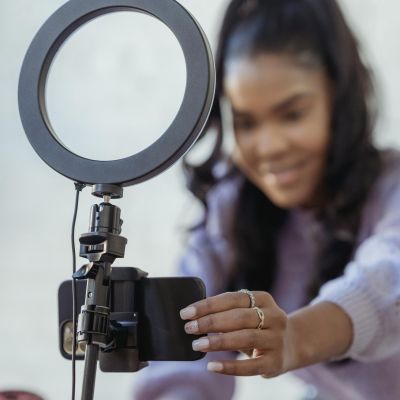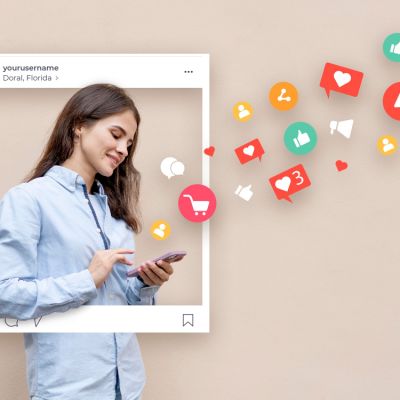The Apparent Demise of Influencer Marketing Does Not Invalidate The Relevance of Influencer Engagement
Or, why there is more to rugby than just kicking the ball
Roger Darashah
One of the hottest ‘debates’ on Twitter at the moment is the decline and fall of one of marketing’s most acclaimed shiny objects; Influencer Marketing. With barely disguised glee, commentators are lining up to pen the obituary of a concept that promised to release brands from their dependence on a declining editorial sector. James Cole, the founder of branding agency The H Hub, sums it up most succinctly in Forbes:
. . . . With every #sponsored post and every soulless endorsement of a product you don’t truly love, your followers trust you a little less. Then, they buy a little less. Then, the brand trusts you a little less because your followers bought less of their product. Then, the brand pays you a little less. Then, you trust the brand a little less in return….it’s a death spiral, and no, I am not being dramatic . . . .
I’m no authority on Influencer Marketing, although my observations (from a distance) are that reducing activities to a form of ‘pay for play’ arbitrage would ultimately dissolve into little value for either party. No, my point is that our consideration of influencers – how to validate them, how to work with them for brands etc – should extend beyond the domain what influencers can do for a brand. The relationship should be mutually beneficial; and I’m not limiting this to paid relationships. Influencer Engagement, is about identifying intersections between a brand’s objectives and those of the influencer, and exploiting them. The latter could range of creating relevance to a particular audience, building credibility around a theme or issue, or simply increasing awareness of its proposition (volume). Influencers (‘professional’ or otherwise) have their own, distinct agendas; some are looking for recognition or validation for their communities, others depend of privileged access to resources or people to generate content, others still may have a purpose to convey (raising awareness of an issue, or mobilizing support).
Mapping these various agendas, finding ‘intersections’ – areas of common ground – and developing propositions that generate value for both parties is a complex, involved task. And a deeply valuable one. The best relationships are those nurtured over a long period, built on trust and a commitment to making the best of ‘intersection’.
Genuine Influencer Engagement is not about devolving that intersection into what one party (the brand or the influencer) wants; it’s a recognition of distinct agendas but also the potential to find areas mutual benefit from the same.
Neither should it be reduced to a financial transaction; this shortcut is fueling much of the distrust and reports of the decline of Influencer Marketing. Again, I’m not a marketer, I can’t speak for this practice and whether the transaction should be considered Influencer Marketing’s the defining legacy.
I have first-hand experience of the early, ‘innocent’ days of Influencer Engagement. In 2008, I managed Edelman’s role with HP across Europe, when the company was pivoting away from traditional PR towards the engagement of alternative influencers. The idea was to complement activities with the participation and, potentially, endorsement of other types of influencer. In the case of printing and digital imaging, these could have included printers, designers, creatives, photographers etc. who would be invited to media events to share their experiences and generate discussion. This was long before social media became mainstream (HP’s blog was still tied to a proprietary platform, which required 10 working days to update . . . . . excluding approvals!). But the principles perfectly reflected the true basis of Influencer Engagement; finding a zone of mutual benefit between the brand and the influencer, and exploiting it. In those days, reducing this relationship to a transaction wasn’t an option, since the practice never existed beyond the scope of celebrity sponsorship, which was beyond our remit. So we hustled, persuaded and cajoled potential influencers from various domains – from creative to business – to participate in and propagate our campaigns. Even today, I see this era as Influencer Engagement in its purest form.
In essence, the difference between much-maligned Influencer Marketing and Influencer Engagement as stark as between rugby and football; both involve a ball and kicking it. But if you reduced rugby to simply kicking, you wouldn’t win many matches. There are so many other tactics at your disposal (from running and passing the ball, to rucking and scrumming); ignoring them would not only place your team at a competitive disadvantage, it would prompt the question whether you were actually playing the sport in question! For kicking, think ‘paid’; yes, influencers may require incentivizing in order to participate, but reducing the collaboration to a transaction is the antithesis of genuine Influencer Engagement.
So, Influencer Marketing should not be confused with its similar-sounding alternative, Influencer Engagement, whose demise – in my opinion – is far from evident. In the arms race between unsolicited content and increasingly effective ad blockers, the ability to persuade people of a particular course of action – through logic, argument, facts, persuasion, relationship – is more relevant than ever.













